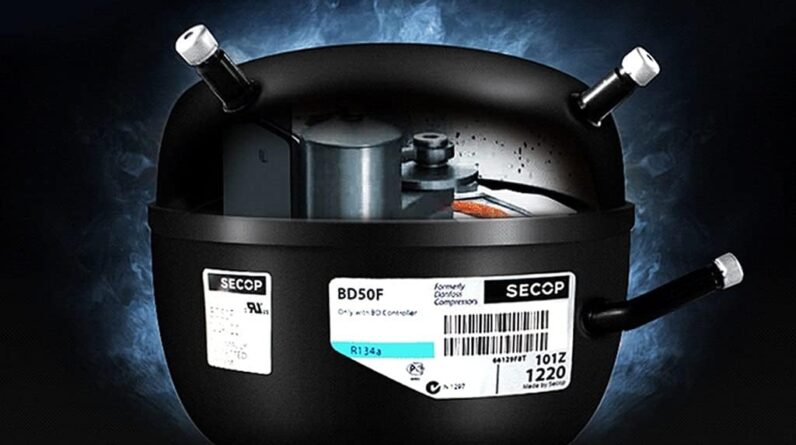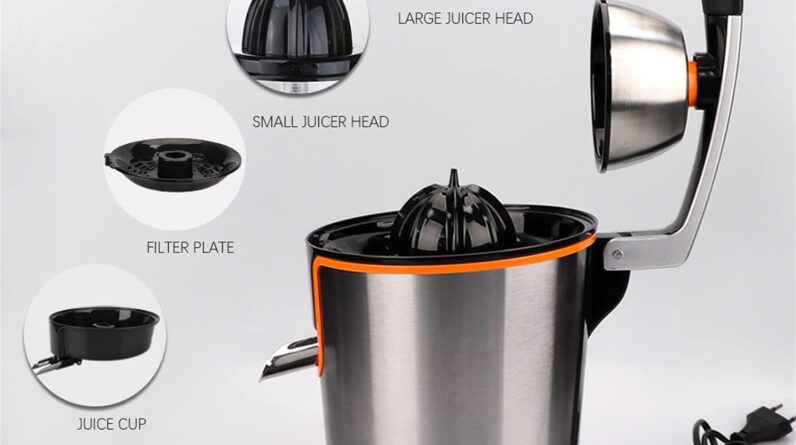
If you’ve noticed a slight increase in your energy bills or have been experiencing difficulties keeping your food fresh, it might be time to take a closer look at your refrigerator’s door seal. The door seal, also known as a gasket, plays a crucial role in maintaining the efficiency of your refrigerator by preventing warm air from entering and cool air from escaping. In this article, we will explore the common signs that indicate your refrigerator may be in need of a new door seal, helping you to identify and resolve any potential issues. So, let’s jump right in and learn more about how to keep your fridge running smoothly!

1. The door is not closing properly
1.1. Difficulty in closing the door
If you find yourself struggling to close your refrigerator door, it could be a sign that your door seal is worn out and in need of replacement. Over time, the rubber lining around the edges of the door can become stiff or lose its elasticity, making it difficult to create a proper seal. When the door doesn’t close securely, it can lead to various issues, such as temperature fluctuations and increased energy consumption.
1.2. Leakage of cold air
Another indication that your refrigerator door seal is not functioning properly is the leakage of cold air. When the seal is damaged or worn out, small gaps or cracks may form, allowing cold air to escape from the refrigerator. This can result in an inefficient cooling performance as the refrigerator struggles to maintain the desired temperature. Moreover, the leaking cold air can cause your refrigerator to work harder, leading to an increase in energy consumption and higher electricity bills.
1.3. Frost buildup on the door
A visible frost buildup on the door, particularly near the edges, is a clear sign that your door seal needs attention. When the seal is compromised, warm air from outside can enter the refrigerator, resulting in condensation and subsequent frost formation. This frost buildup not only affects the overall cooling efficiency but also indicates that the seal is no longer effectively sealing the refrigerator, allowing unwanted air to enter and compromising the freshness and quality of your food.
2. Visible damage to the door seal
2.1. Cracks or tears
Inspect your refrigerator door seal for any visible cracks or tears. The constant opening and closing of the door, along with general wear and tear, can cause the seal to deteriorate over time. Cracks or tears in the seal can significantly impact its effectiveness in maintaining a proper seal between the refrigerator and the outside environment. As a result, it can lead to issues like temperature fluctuations, inefficient cooling, and increased energy consumption.
2.2. Loose or detached seal
If you notice that the door seal has become loose or detached from the refrigerator door, it is a clear indication that it needs to be replaced. A loose or detached seal not only compromises the proper sealing of the refrigerator but can also cause problems such as condensation, frost buildup, and unpleasant odors. It is crucial to address a loose or detached seal promptly to ensure the optimal functioning of your refrigerator.
2.3. Mold or mildew growth
Refrigerator door seals provide an ideal breeding ground for mold and mildew if not properly maintained. If you observe any mold or mildew growth on your door seal, it is a strong indication that it is no longer performing its sealing function effectively. Mold and mildew not only affect the hygiene and cleanliness of your refrigerator but can also lead to unpleasant odors and potential health risks. It is essential to replace the seal to prevent the growth and spread of mold and mildew.

3. Unusual noises coming from the refrigerator
3.1. Whistling or hissing sounds
If you hear whistling or hissing sounds coming from your refrigerator, it could be a sign that your door seal is faulty. The formation of small gaps or cracks in the seal can allow air to escape, resulting in the production of these noises. The whistling or hissing sounds are the result of air pressure escaping through the compromised door seal. It is important to address this issue promptly to ensure the proper functioning and efficiency of your refrigerator.
3.2. Constant running of the motor
When the door seal is not functioning properly, your refrigerator may experience difficulties in maintaining the desired temperature. As a result, the motor may run constantly in an attempt to cool the refrigerator to the set temperature. This constant running of the motor can be both noisy and an indication that the door seal is not creating an effective seal. If you notice this symptom, it is advisable to check the condition of your door seal and consider replacing it if necessary.
3.3. Clicking or popping noises
Unusual clicking or popping noises originating from your refrigerator can also be a sign of a faulty door seal. When there are gaps or cracks in the seal, the temperature inside the refrigerator can fluctuate, causing different components to expand and contract. This expansion and contraction process can lead to clicking or popping noises. If you encounter such sounds, it is essential to inspect the door seal and replace it if needed to prevent further issues.
4. Increased energy consumption
4.1. Rising electricity bills
If you notice a significant increase in your electricity bills without any other apparent changes in your household energy consumption, it could be due to a faulty refrigerator door seal. When the seal is compromised, cold air can escape, and warm air can enter, forcing your refrigerator to work harder to maintain the desired temperature. This increased workload leads to higher energy consumption, resulting in rising electricity bills. Replacing the door seal can help restore the energy efficiency of your refrigerator and reduce unnecessary expenses.
4.2. Frequent cycling of the compressor
A faulty door seal can cause your refrigerator’s compressor to cycle more frequently. The compressor is responsible for maintaining the desired temperature inside the refrigerator. When the seal is compromised and cold air is escaping, the compressor has to work harder to cool the warm air entering the refrigerator. This increased workload can cause the compressor to cycle on and off more frequently, resulting in higher energy consumption. By replacing the door seal, you can help alleviate this issue and reduce the strain on the compressor.
4.3. Inefficient cooling performance
One of the most evident signs that your refrigerator door seal needs to be replaced is an inefficient cooling performance. If you notice that your perishable foods are spoiling sooner than usual or that your beverages are not as cold as they should be, it is a clear indication that the seal is no longer effectively sealing the refrigerator. A compromised seal allows warm air from outside to enter, affecting the overall cooling efficiency. By addressing this issue and replacing the door seal, you can restore the optimal cooling performance of your refrigerator.

5. Excessive condensation inside the refrigerator
5.1. Water droplets on food or containers
If you find water droplets on your food or containers inside the refrigerator, it is a sign of excessive condensation. A faulty door seal can allow warm, moist air to enter the refrigerator, leading to condensation forming on the food and containers. Excessive condensation not only affects the quality of your food but also leads to increased humidity levels inside the refrigerator, potentially accelerating the growth of mold and bacteria. By replacing the door seal, you can prevent the formation of condensation and maintain a dry environment inside your refrigerator.
5.2. Wet or moist interior surfaces
When a refrigerator door seal is no longer sealing properly, moisture from the surrounding environment can seep into the refrigerator, resulting in wet or moist interior surfaces. This damp environment is a breeding ground for mold and bacteria, which can impact the freshness of your food and create foul odors. If you notice wet or moist interior surfaces, it is essential to replace the door seal to eliminate the excess moisture and maintain a hygienic environment within your refrigerator.
5.3. Formation of ice crystals
If you observe the formation of ice crystals on the interior surfaces of your refrigerator, particularly near the door, it is a strong indication that your door seal is compromised. The presence of ice crystals signifies that warm air is entering the refrigerator, causing condensation to freeze and form ice. This not only affects the efficiency of the cooling process but also indicates that the seal is no longer providing an effective barrier between the refrigerator and the surrounding environment. Replacing the door seal is vital to prevent further ice formation and ensure proper functioning.
6. Difficulty in maintaining desired temperature
6.1. Temperature fluctuations
A faulty door seal can lead to temperature fluctuations inside your refrigerator. When the seal is compromised, cold air can escape, and warm air can enter, causing the temperature to fluctuate. This fluctuation can affect the freshness and quality of your food, as well as the overall performance of the refrigerator. If you find that the temperature inside your refrigerator is inconsistent and difficult to maintain, it is a clear indication that the door seal needs attention and potential replacement.
6.2. Inconsistent cooling
When a refrigerator door seal is not sealing properly, it can result in inconsistent cooling throughout the refrigerator. Certain areas may be colder or warmer than others, leading to uneven cooling and potential spoilage of perishable items. Inconsistent cooling can occur when cold air is escaping through gaps or cracks in the seal, making it challenging for the refrigerator to maintain a consistent temperature. By replacing the door seal, you can restore consistent and efficient cooling performance.
6.3. Spoiled or thawed perishables
If you frequently find that your perishable items are spoiling or thawing prematurely in the refrigerator, it may be a direct consequence of a faulty door seal. A compromised seal allows warm air to enter the refrigerator, resulting in an increased internal temperature and accelerated spoilage of perishables. Additionally, thawing and refreezing of frozen items can occur when the seal is unable to maintain a consistent temperature. By addressing the issue promptly and replacing the door seal, you can help prevent the premature spoilage of your food.

7. Unpleasant odors from the refrigerator
7.1. Lingering smell of spoiled food
If you detect a lingering smell of spoiled food inside your refrigerator, it could be an indication of a faulty door seal. When the seal is not properly sealing the refrigerator, warm air and various odors from the outside environment can enter. This can result in the lingering smell of spoiled food, even if your refrigerator is clean and free of any actual spoiled items. By replacing the door seal, you can eliminate the unwanted odors and maintain a fresh and pleasant environment within your refrigerator.
7.2. Mold or bacterial growth
A faulty door seal can create a conducive environment for mold and bacterial growth inside your refrigerator. If you notice any mold or bacterial colonies forming on the interior surfaces, it is a clear sign that the seal is compromised. Mold and bacterial growth not only affect the hygiene and freshness of your food but can also generate unpleasant odors. By replacing the door seal and addressing the underlying issue, you can prevent the growth of mold and bacteria, ensuring a clean and odor-free refrigerator.
7.3. Foul or unusual odors
Unusual or foul odors emanating from your refrigerator can be an indication of a faulty door seal. When warm air from the outside environment enters the refrigerator due to a compromised seal, it can carry various smells and odors with it. These odors can range from mildew and mold to strong, unpleasant scents. By replacing the door seal, you can eliminate the source of these odors and keep your refrigerator smelling fresh and clean.
8. Visible gaps or warping of the door seal
8.1. Loose fit between the seal and the door
Inspect the area where the door seal attaches to the refrigerator door. If you notice a loose fit between the seal and the door, it is a clear indication of a faulty seal. Gaps or spaces between the seal and the door can compromise the effectiveness of the seal in creating an airtight barrier. These gaps can allow warm air to enter and cold air to escape, leading to various issues such as temperature fluctuations and inefficient cooling. By replacing the door seal, you can ensure a snug fit and proper sealing between the seal and the door.
8.2. Warped or distorted seal
Over time, a refrigerator door seal can become warped or distorted due to extensive use and exposure to temperature changes. If you observe any irregularities in the shape or contour of the seal, it may be a sign that it needs to be replaced. A warped or distorted seal cannot provide the necessary seal between the refrigerator and the outside environment, compromising the overall performance of the refrigerator. By replacing the door seal, you can restore its proper shape and functionality.
8.3. Light passing through closed door
An obvious indication that your door seal is in need of replacement is the presence of light passing through a closed refrigerator door. Close the door and inspect the edges for any visible light seeping through. If light is passing through, it signifies that the seal is not creating an effective barrier and is allowing air and moisture to enter the refrigerator. This can lead to various issues, including inefficient cooling, increased energy consumption, and potential spoilage of perishable items. By replacing the door seal, you can eliminate the passage of light and ensure a proper seal.

9. Age or wear of the current door seal
9.1. Longevity of typical door seals
The average lifespan of a refrigerator door seal can vary depending on factors such as usage, maintenance, and the quality of the seal. Generally, door seals can last anywhere from five to ten years. However, it is essential to keep in mind that wear and tear can occur over time, causing the seal to deteriorate and lose its effectiveness. Regular inspection and maintenance can help prolong the lifespan of your door seal, but eventually, replacement may be necessary to maintain optimal performance.
9.2. Signs of wear and tear
Inspect your door seal for signs of wear and tear. Over time, the constant opening and closing of the refrigerator door can cause the seal to become worn out or damaged. Look for cracks, tears, or any visible deterioration on the seal. Additionally, pay attention to any changes in the seal’s texture, elasticity, or appearance. These signs can indicate that the seal is reaching the end of its lifespan and should be replaced to ensure the proper functioning of your refrigerator.
9.3. Replacement schedule
While there is no set schedule for replacing refrigerator door seals, it is generally recommended to replace them every five to ten years, depending on their condition. Regularly inspecting your door seal and addressing any signs of wear and tear can help you determine when it is time for a replacement. It is important to prioritize the maintenance and replacement of your door seal to avoid potential issues such as temperature fluctuations, increased energy consumption, and inefficient cooling. By following a regular replacement schedule, you can ensure that your refrigerator operates at its best and keeps your food fresh and safe.
10. DIY tests to check the door seal
10.1. Dollar bill test
Performing a simple dollar bill test can help you assess the condition of your refrigerator door seal. Start by opening the refrigerator door and placing a dollar bill between the seal and the door. Close the door and attempt to pull out the dollar bill. If you can easily remove the bill without any resistance, it indicates that the seal is not creating a proper seal and needs to be replaced. However, if you feel resistance or the bill remains firmly in place when pulled, it suggests that the door seal is functioning properly.
10.2. Candle flame test
Another DIY test involves using a candle flame to check the effectiveness of your door seal. Close the refrigerator door with the candle flame placed near the seal. Observe the flame closely for any flickering or movement. If the flame remains steady, it indicates that the seal is effectively preventing any air leaks. However, if you notice the flame flickering or being drawn towards a particular area, it suggests that there is a gap or breach in the seal at that point. In such cases, replacing the door seal is recommended to maintain proper functioning.
10.3. Fridge magnet test
Using a simple fridge magnet can also help you assess the condition of your door seal. Close the refrigerator door with the fridge magnet attached to it. If the magnet securely attaches to the door and remains in place without easily falling off, it indicates that the seal is creating a proper seal and functioning effectively. However, if the magnet does not adhere firmly or falls off easily, it suggests that the seal is not sealing properly and should be replaced to ensure optimal performance.
In conclusion, it is important to pay attention to the signs that your refrigerator needs a new door seal. Difficulty in closing the door, leakage of cold air, frost buildup, visible damage to the seal, unusual noises, increased energy consumption, excessive condensation, difficulty in maintaining the desired temperature, unpleasant odors, visible gaps or warping of the seal, and the age or wear of the current seal are all indications that a replacement may be necessary. Regular inspection, maintenance, and timely replacement of the door seal can help ensure the proper functioning and longevity of your refrigerator, keeping your food fresh and your energy bills in check.





